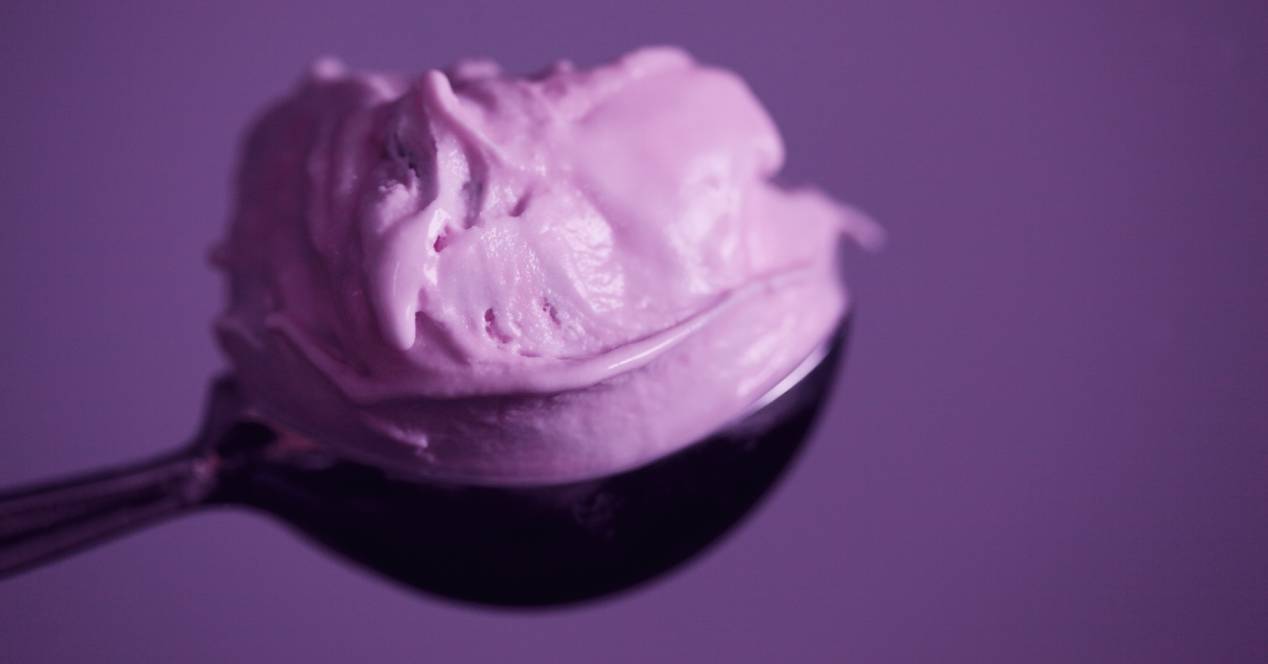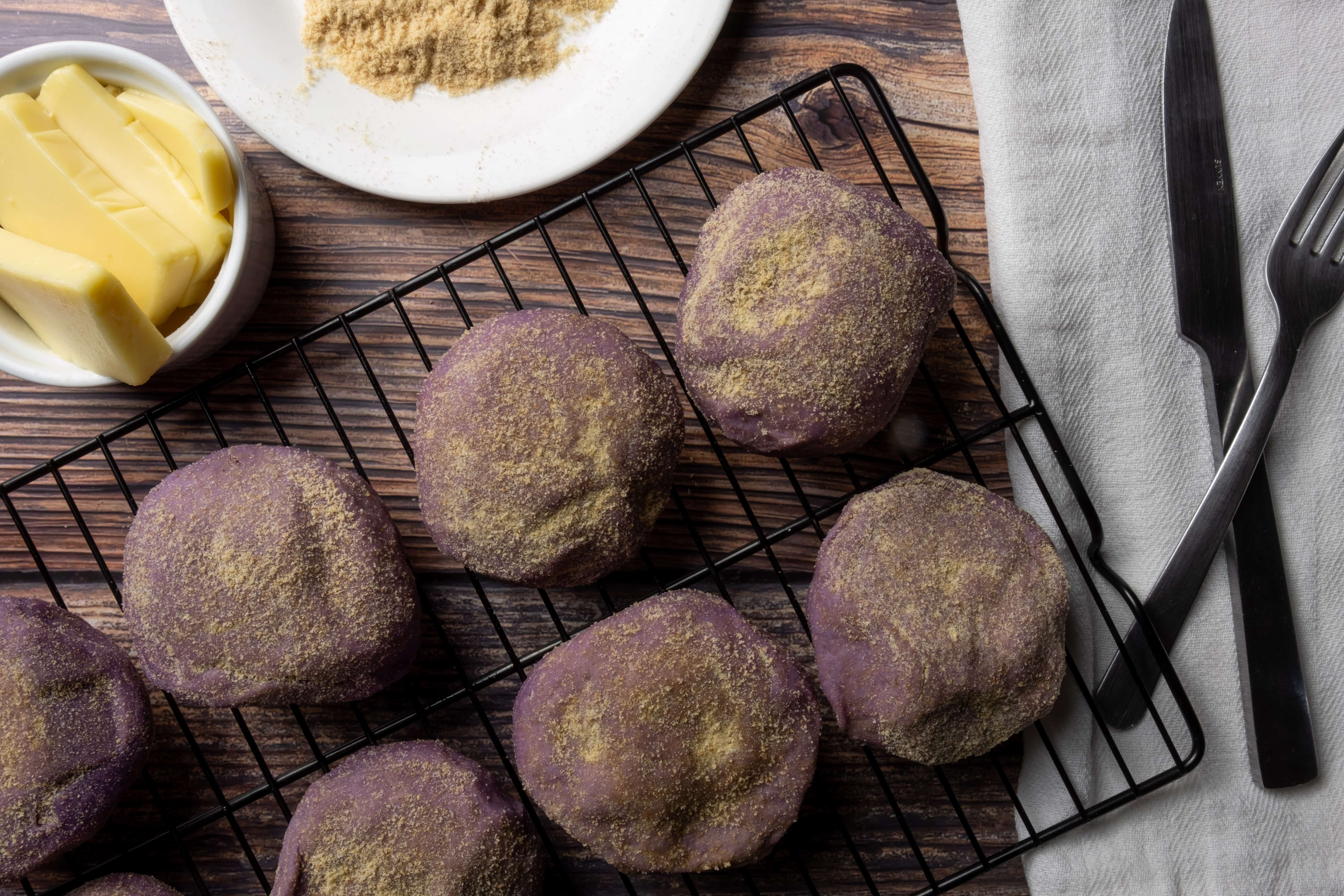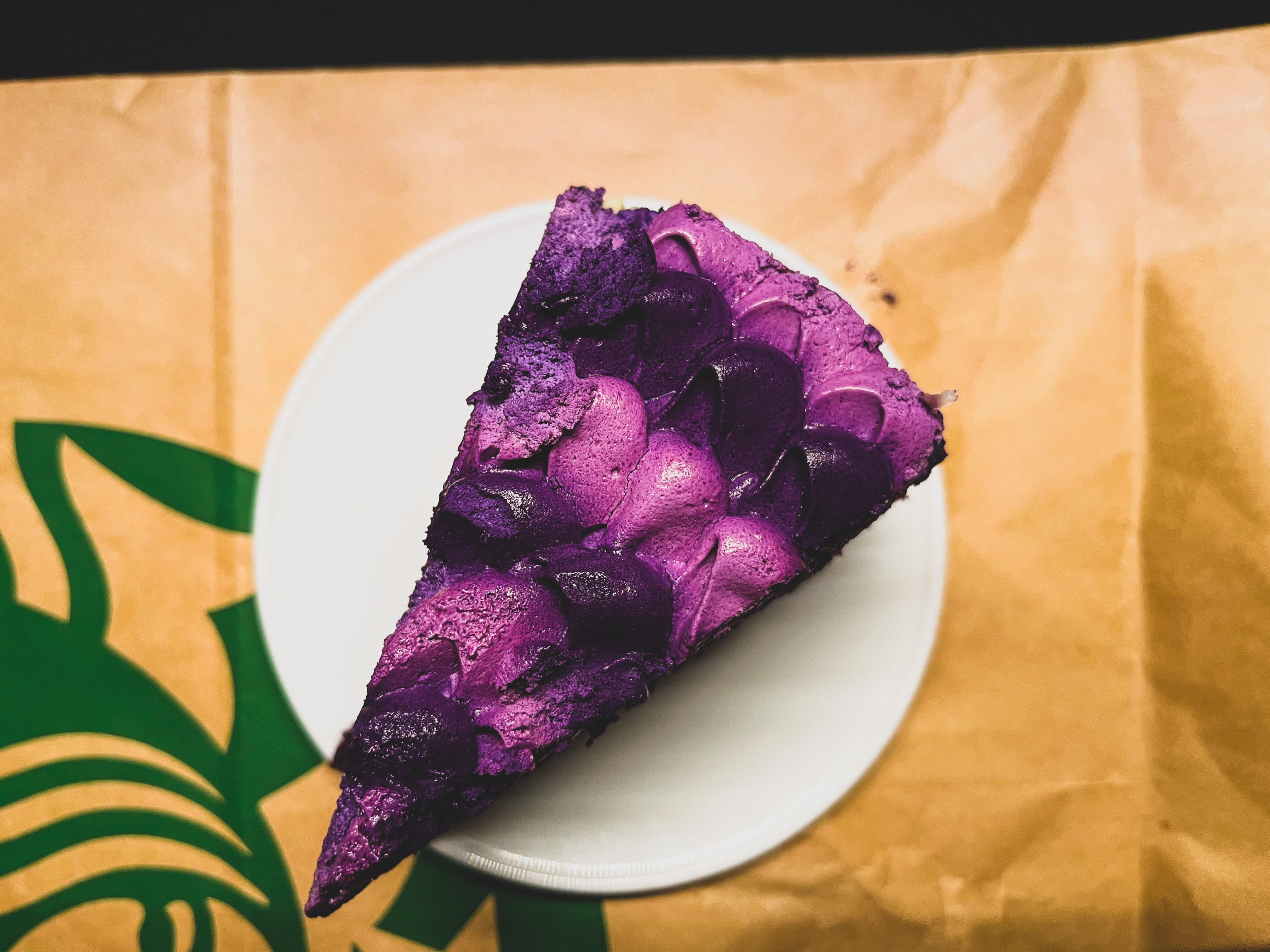
More and more people are buying some kind of bright purple potatoes. The vegetarian fad is actually called Ube. Thanks to the plant-based diet movement (and increased access to fruits and vegetables from other parts of the world), we're getting more and more varied dishes.
There is no need to swell up to eat only broccoli. Adding new and original vegetables, like ube, makes eating much easier and less boring. Including a variety of fruits and vegetables makes meals more colorful and flavorful and provides all the antioxidants and phytonutrients the body needs to thrive. Trying new foods is one of the best ways to keep boredom at bay and make healthy eating a regular part of your everyday lifestyle.
¿ What is it ?
It's a tuber purple in color related to the orange sweet potatoes that you probably eat regularly. Although similar to the sweet potato in shape and size, the ube has a darker skin and deep purple flesh.
Despite being originally from the Philippines, it has recently become an international sensation for its unique color and sweet, starchy flavor. The dark purple shade is a fun and playful color for cooking and baking. Also, in the middle of the Instagram era, anyone wants to show off colorful recipes.
Despite its color, it is not as sweet as the classic sweet potato. It also doesn't have as moist and smooth a texture when cooked. It has a softer flavor, with a hint of dried fruit and vanilla. Though others describe it as creamy and coconut-like.
Nutrients and nutritional value
Nutritionally, it is quite similar to other sweet potatoes. Both are excellent sources of fiber, vitamins, and minerals, and are rich in antioxidants, which help protect against cell damage in the body. This is what you get in one serving of cooked ube:
- Energy: 120 calories
- Fat: 0 grams
- Carbohydrates: 27 grams
- Fiber: 4 grams
- Protein: 1 gram
- Sugar: 0 grams
- Sodium: 10 mg
On top of that, you also get 12 milligrams of Vitamin C, smaller amounts of calcium, iron and vitamin A.
One of the main differences between sweet potato and ube is the type of antioxidants associated with its color. While the orange hue of sweet potatoes indicates rich carotenoid content, the purple hue indicates many anthocyanins. Anthocyanins, which are also responsible for the berries' deep red and purple hues, have been shown to help the body fight inflammation.
Purple yam is also a good source of complex carbohydrates, particularly starch. Resistant starch can act as a great prebiotic fiber. Prebiotics help the healthy bacteria in the gut to thrive and protect our immune systems.
Ultimately, both ube's antioxidant profile and fiber content make it a great addition to an anti-inflammatory diet.

Services
The ube has numerous positive effects on health. For this reason, it is recommended to introduce it into the usual diet whenever possible or easy to find.
Rich in antioxidants
Ube is rich in antioxidants, including anthocyanins and Vitamin C. Antioxidants help protect cells from damage caused by harmful molecules called free radicals. Free radical damage is linked to many chronic conditions, including cancer, heart disease, diabetes, and neurodegenerative disorders.
This purple root vegetable is a great source of vitamin C, which acts as a powerful antioxidant in the body. In fact, studies have shown that consuming more vitamin C can increase antioxidant levels by up to 35%, protecting against oxidative cell damage.
All the anthocyanins they are also a type of antioxidant polyphenol. Regular consumption of fruits and vegetables rich in polyphenols has been linked to a lower risk of various types of cancer.
blood sugar control
The flavonoids in purple ube have been shown to help lower blood sugar in people with type 2 diabetes. Obesity and inflammation caused by oxidative stress increase the risk of insulin resistance, poor blood sugar control, blood and type 2 diabetes.
Insulin resistance is when cells do not respond properly to the hormone insulin, which is responsible for maintaining blood sugar control.
One study observed that flavonoid-rich extracts of ube reduced oxidative stress and insulin resistance by protecting insulin-producing cells in the pancreas. This is likely due in part to the low glycemic index of the ube This, which ranges from 0 to 100, is a measure of how quickly sugars are absorbed into the bloodstream.
Ubes have a glycemic index of 24, which means carbohydrates break down slowly into sugars, resulting in a steady release of energy rather than a blood sugar spike.
Improves digestion
Purple root vegetables can help improve gut health. They are full of complex carbohydrates and are a good source of resistant starch, a type of carbohydrate that is resistant to digestion.
Studies claim that they increase the number of bifidobacteria, a type of beneficial intestinal bacteria, in a simulated large intestine environment. These bacteria play a vital role in gut health, helping to break down complex carbohydrates and fiber. They may even help reduce the risk of certain conditions, such as colorectal cancer, inflammatory bowel disease, and irritable bowel syndrome. They also produce healthy fatty acids and B vitamins.
Lowers blood pressure
High blood pressure is a major risk factor for heart attacks and strokes. Purple berries may have blood pressure-lowering effects. Researchers believe this is likely due to its impressive antioxidant content.
Science claims they can help lower blood pressure in a similar way to common blood pressure-lowering medications called angiotensin-converting enzyme inhibitors (ACE inhibitors). However, more research in humans is needed before concluding whether eating ube can lower blood pressure.
Improves asthma symptoms
Asthma is a chronic inflammatory disease of the airways. Research suggests that a high dietary intake of antioxidants such as vitamins A and C is associated with a lower risk of asthma.
Adult-onset asthma is associated with low vitamin A intake. In fact, people with asthma met on average only about 50% of the recommended daily intake for vitamin A. In addition, the incidence of asthma increased by 12 % in those who had a low intake of vitamin C in the diet.
Ube is a good source of antioxidants and vitamins A and C, helping you meet daily intake levels for these vitamins.
Are the ube and taro the same?
You may have heard of another purple root vegetable called taro which looks an awful lot like the ube, and you wouldn't be the only one to confuse them. Although they may look somewhat similar on the outside, they are definitely not the same food.
Although taro can take on a light purple hue, it is usually white or beige in color. Also, because it has a more neutral flavor, taro is more commonly used in savory dishes. Instead, the ube, with its sweet and nutty flavor, is more suitable for desserts.

How do you eat it?
I imagine you thinking about making one salad or some potatoes seasoned with this tuber; but, in addition to being difficult to find in any supermarket, you have to know how to buy it. You may find powdered or extract versions, but it is recommended to opt for the whole ube.
Once you get your hands on some ube, the sweet flavor and creamy texture will make it a natural choice for confectionerysuch as baked goods. It is often used in many Filipino desserts such as cupcakes, cakes, cheesecakes, cookies, ice cream, and bubble tea.
You can add mash from ube to pancakes or waffles and quick bread recipes. It also works well in almost any recipe that calls for pumpkin puree. However, the ube is not only good for satisfying the sweet tooth. Of course, you can also bake, roast and mash them, just like you would regular potatoes or sweet potatoes.